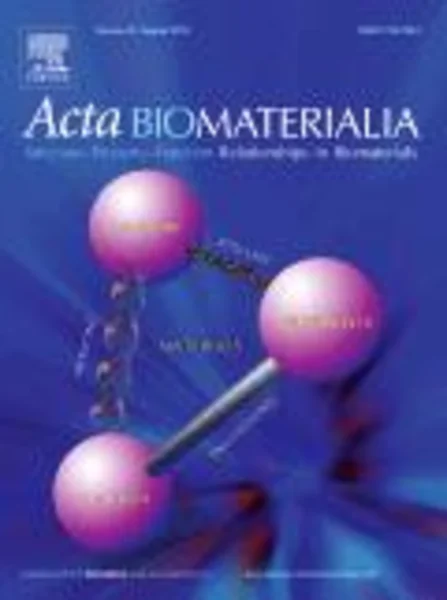-
functional reconstruction of corneal endothelium using nanotopography for tissue-engineering applications
جزئیات بیشتر مقاله- تاریخ ارائه: 1392/01/01
- تاریخ انتشار در تی پی بین: 1392/01/01
- تعداد بازدید: 690
- تعداد پرسش و پاسخ ها: 0
- شماره تماس دبیرخانه رویداد: -
dysfunction in the corneal endothelium, which controls the hydration and transparency of the cornea, is one of the common reasons for transplantation. a tissue-engineered corneal endothelium is of interest for corneal regeneration and for in vitro testing of ocular drugs. in the native environment, corneal endothelial cells interact with the nanotopography of the underlying descemet’s membrane. this study showed that nanotopography enhanced bovine corneal endothelial cell (bcec) responses, creating a monolayer which resembled the healthy corneal endothelium. topographies of different geometries were first tested to identify those that would elicit the most significant responses. a bcec monolayer was then generated on both micro- and nanoscale pillars and wells. the bcec monolayer cultured on topographies exhibited polygonal geometries with well-developed tight junction proteins. scanning electron microscopy revealed that cells on pillars showed a higher density of microvilli, which was similar to native corneal endothelium. bcecs on nanopillars displayed a lower coefficient of variation of area (0.31) that was within the range of healthy corneal endothelium. more importantly, a bcec monolayer cultured on nanopillars also had an enhanced na+/k+-atpase immunofluorescence expression, mrna upregulation and a higher na+/k+-atpase activity. these results suggest that nanopillar substrate topography may provide relevant topographical cues, which could significantly enhance the formation and function of corneal endothelium.
مقالات جدیدترین رویدادها
-
استفاده از تحلیل اهمیت-عملکرد در ارائه الگوی مدیریت خلاقیت سازمانی و ارائه راهکار جهت بهبود
-
بررسی تاثیر ارزش وجوه نقد مازاد بر ساختار سرمایه شرکت های پذیرفته شده در بورس اوراق بهادار تهران
-
بررسی تأثیر سطح افشای ریسک بر قرارداد بدهی شرکت های پذیرفته شده در بورس اوراق بهادار تهران
-
بررسی تأثیر رتبه بندی اعتباری مبتنی بر مدل امتیاز بازار نوظهور بر نقد شوندگی سهام با تأکید بر خصوصی سازی شرکت ها
-
تأثیر آمیخته بازاریابی پوشاک ایرانی بر تصویر ذهنی مشتری پوشاک ایرانی (هاکوپیان)
-
تاثیر نوع استراتژی و توانمندی های سازمانی بر عملکرد: نقش میانجی تکنیک های حسابداری مدیریت
-
ارزیابی توزیع فضایی بافت فرسوده در شهر آبدانان و ارائه الگوی بهینه مداخله در آن
-
مدل سازی استاتیک مخزن دالان در یکی از میادین جنوب ایران
-
تعیین پارامتر های موثر در حمل و نقل مطلوب شهری با استفاده از روش ahp نمونه موردی شهر شیراز
-
سیرالولیاء؛ مستندترین تذکره در شرح احوال مشایخ سلسله چشتیه
مقالات جدیدترین ژورنال ها
-
مدیریت و بررسی افسردگی دانش آموزان دختر مقطع متوسطه دوم در دروان کرونا در شهرستان دزفول
-
مدیریت و بررسی خرد سیاسی در اندیشه ی فردوسی در ادب ایران
-
واکاوی و مدیریت توصیفی قلمدان(جاکلیدی)ضریح در موزه آستان قدس رضوی
-
بررسی تاثیر خلاقیت، دانش و انگیزه کارکنان بر پیشنهادات نوآورانه کارکنان ( مورد مطالعه: هتل های 3 و 4 ستاره استان کرمان)
-
بررسی تاثیر کیفیت سیستم های اطلاعاتی بر تصمیم گیری موفق در شرکتهای تولیدی استان اصفهان (مورد مطالعه: مدیران شرکتهای تولیدی استان اصفهان)
-
صنعت خودروی تجاری ایران از منظر بازگران: راهکارهایی برای توسعه
-
بررسی تاثیر وابستگی به گروه تجاری بر انتخاب حسابرس
-
واکاوی تهدیدها و فرصت های جذب سرمایه گذاری در صنعت پتروشیمی از دیدگاه کارکنان شپترو
-
the management of capital assets life cycle in petrochemical industry
-
influence of polypropylene length on stability and flow of fiber-reinforced asphalt mixtures




سوال خود را در مورد این مقاله مطرح نمایید :